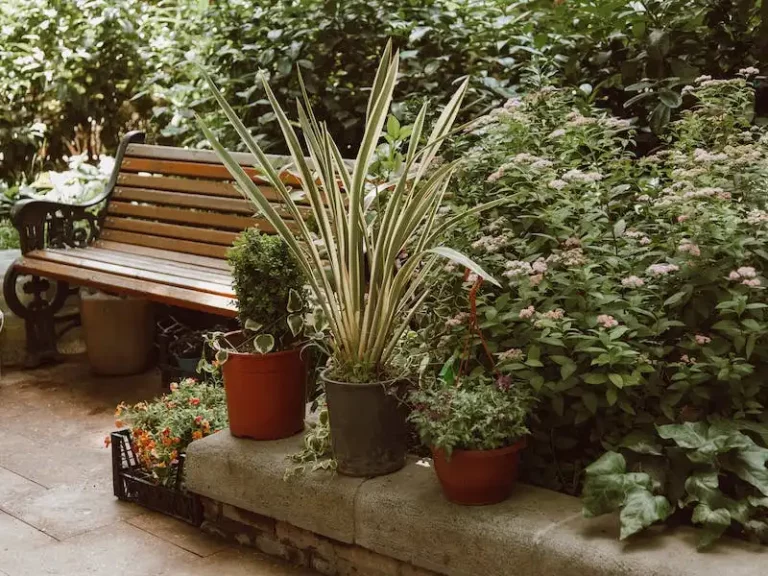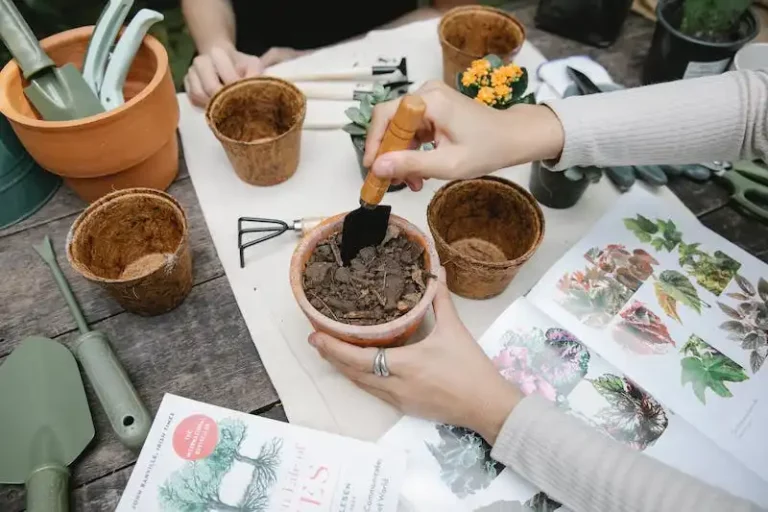If you notice that the berries on your grapevines have become shriveled, wrinkling, and turning bluish black, it is likely that something is causing them to shrivel up and dry out. This phenomenon, known as shriveling, is related to a decrease in moisture content and can occur for a variety of reasons.
One possible reason is that your grapevines may lack sufficient water. Grapes need a consistent supply of water to thrive, and if they are not getting enough, their berries may shrivel up. Make sure to water your grapevines regularly, especially during hot and dry periods, to prevent this from happening.
Another possible cause of shriveling berries is the presence of weeds. Weeds compete with grapevines for water and nutrients, and if left uncontrolled, can deprive the vines of what they need to produce plump, juicy grapes. Keep your grapevines free from weeds to ensure their health and productivity.
In addition, shriveling berries can be a sign of a fungal disease or infestation. Diseases such as black rot or powdery mildew can cause the berries to shrivel and turn black. Pests like the grapevine moth or grape berry moth can also damage the berries, leading to their shriveling. If you suspect that your grapevines are affected by a disease or pest, consult a professional for proper identification and treatment.
Overall, if you notice that the berries on your grapevines have shriveled up and turned bluish black, it is important to identify the underlying cause and address it promptly. Whether it is a lack of water, weed competition, or a disease/pest issue, taking the necessary steps to provide your grapevines with what they need will help ensure the successful growth and production of your grapes.
Why is my Cactus shriveling up and wrinkling
If you notice that your cactus is shriveling up and wrinkling, there could be several reasons for this. One possible cause is that the cactus is not getting enough water. Cacti are desert plants that are adapted to survive with very little water, but they still need some moisture to thrive. If the soil around your cactus is completely dry, it may be a sign that your cactus needs a drink.
On the other hand, if you are giving your cactus too much water, this can also cause it to shrivel up. Overwatering can lead to root rot and cause the cactus to become soft and mushy. It’s important to find the right balance and water your cactus sparingly, allowing the soil to dry out between waterings.
In addition to watering, another factor that can contribute to a shriveling cactus is related to its sunlight needs. Cacti generally thrive in bright, indirect light. If your cactus is not getting enough light, it may start to shrivel and become weak. Make sure to place your cactus in a spot where it can receive adequate light throughout the day.
Furthermore, temperature and humidity can also affect the health of your cactus. Cacti prefer warm and dry environments, so if the temperature drops too low or the humidity levels are too high, it may cause your cactus to shrink and wrinkle. It’s important to keep your cactus in a warm and well-ventilated area to prevent this from happening.
Lastly, it’s worth noting that some cacti naturally shrink and wrinkle as they age. This is a normal part of their growth process, so if you notice your cactus starting to shrivel up, it may just be a sign of maturity.
In conclusion, if you notice your cactus shriveling up and wrinkling, it is likely due to a lack or excess of water, inadequate sunlight, inappropriate temperature or humidity levels, or simply a natural aging process. By understanding the needs of your cactus and making the necessary adjustments, you can help ensure its health and prevent further shriveling.
If you notice your cactus is wrinkling and soft it needs a drink
If you notice that your cactus is shriveling and becoming soft to touch, it is a clear indication that it needs water. Cacti are plants that are adapted to survive in arid conditions, and they have developed certain features to store water, such as a thick skin. However, that doesn’t mean they can go without water forever.
When a cactus starts to shrivel, it means that its water storage has been depleted. This can happen for several reasons, including hot weather, lack of rain, or improper watering. Cacti should be watered less frequently than other plants, as they prefer a drier environment. However, they still need water to survive.
If you notice your cactus is wrinkling and soft, you should give it a thorough watering. Use a watering can or a hose to thoroughly soak the soil until you see water draining out of the drainage holes at the bottom of the pot. Allow the soil to dry out completely before watering it again to prevent overwatering.
In addition to water, cacti also require proper light and well-draining soil. Make sure your cactus is placed in a sunny spot where it can receive at least six hours of direct sunlight per day. Use a cactus mix or a well-draining soil mix specifically designed for succulents to ensure that excess water can easily escape.
Regularly inspect your cactus for signs of pests or diseases, as these can also cause it to shrivel up and become soft. Remove any weeds or dead leaves that may be competing for nutrients with your cactus.
In conclusion, if you notice that your cactus is shriveling and becoming soft, it is a sign that it needs water. Pay attention to the soil moisture, adjust your watering schedule accordingly, and provide your cactus with proper light and well-draining soil to ensure its health and longevity.
The berries on my grapevines have shriveled up and turned bluish black. What happened to my grapes?
If you’ve noticed that the berries on your grapevines have shriveled up and turned bluish black, you may be wondering what caused this issue with your grapes. There are a few possible reasons for this phenomenon.
One possible cause could be a lack of water. Grapes, like any plant, need a consistent water supply to thrive. If the grapevines did not receive enough water, the berries may shrivel up and turn black. Ensure that you are watering your grapevines regularly and deeply to provide them with enough moisture.
Another potential cause could be a fungal disease called powdery mildew. This disease can cause the berries to shrivel, blacken, and become wrinkled. To prevent powdery mildew, make sure you have proper air circulation around your vines and avoid over-watering. If you notice signs of powdery mildew, you can treat it with fungicides or organic remedies.
Poor soil conditions can also lead to shriveled grapes. If the soil lacks proper nutrients or has a high amount of salt or clay, it can affect the health and development of the berries. Test your soil to determine if it needs any amendments, such as adding organic matter or adjusting the pH levels.
In some cases, pests like aphids or spider mites may be causing the shriveling of your grapes. These insects can damage the berries and cause them to shrivel prematurely. Inspect your grapevines for signs of pest infestation and take appropriate measures to control them if necessary.
Lastly, extreme temperatures can also affect the quality of your grapes. If the weather is exceptionally hot or cold, it can cause the berries to shrivel and turn black. Providing shade or using protective covers during extreme weather conditions can help mitigate these effects.
In conclusion, there are several possible reasons why the berries on your grapevines have shriveled up and turned bluish black. It is essential to identify the underlying cause and take appropriate action to ensure healthy grape growth. Consider factors such as watering, fungal diseases, soil conditions, pests, and extreme temperatures when addressing this issue with your grapes.
shrivel up
When the berries on your grapevines shrivel up, it means that something is not quite right with your grapes. This can be caused by a variety of factors, including insufficient water, extreme temperatures, or certain plant diseases.
One common reason why grapes shrivel up is because they are not getting the water they need. Grapes require a consistent supply of water throughout the growing season, especially during the hot summer months. If you notice that your grapevines are not receiving enough water, it is important to increase your irrigation or watering schedule.
In addition to water, grapes also need proper nutrition. If the berries are shriveling up, it may be a sign that they are not getting the necessary nutrients. Make sure you are providing your grapevines with a balanced fertilizer, taking into consideration the specific requirements of grape plants.
Extreme temperatures can also cause grapes to shrivel up. High temperatures can cause the grapes to become soft and wrinkle, while low temperatures can lead to black, shrivelled berries. If you live in an area with extreme temperatures, consider shading your grapevines or using protective covers to shield them from the elements.
Plant diseases can also be a factor in the shriveling of grapes. For example, powdery mildew and botrytis can cause grapes to shrivel and turn black. If you notice any signs of disease on your grapevines, it is important to take immediate action to prevent the spread and minimize the damage.
In conclusion, if you notice that the berries on your grapevines have shriveled up and turned bluish black, it is important to identify the cause and take appropriate actions. Whether it is related to water, nutrition, extreme temperatures, or plant diseases, addressing the issue promptly can help prevent further damage and ensure healthy grape production.




